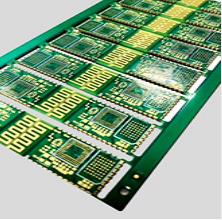What is the difference between COF FPC carrier boards that can be used in smart phones and ordinary TV panels COF FPC? Where is the processing difficulty?
The COF FPC traditionally used in the TV field is actually not much different from the ordinary FPC in the production and processing links. In addition to the line width and line spacing of the FPC, which is more refined than the ordinary FPC, it is still produced by the standard subtractive etching method.
The COF FPC carrier board for smartphones is produced in a completely different way from the standard subtractive etching method. It is produced by an additive method of semiconductor chips. The industry refers to this process as the SAP semi-additive method. . Because the minimum line width and line spacing of the FPC produced by the standard subtractive etching method are generally above 15 microns, there is basically nothing that can be done for the more refined COF production process.
The processing technology of SAP semi-additive method mainly comes from SLP type carrier board PCB. But when it entered the smart phone industry application, Apple was the first to use this technology in the production of mobile phone motherboards on a large scale.

Earlier, when Apple, Samsung, and LG developed new OLED display devices, in order to improve the device packaging yield and product performance of flexible OLED products, an atomic deposition production process called ALD was used in the semiconductor process. Encapsulating OLED devices not only controls the thickness of the encapsulation layer below 0.1 micron, but also greatly improves the encapsulation yield of OLED devices, and the device service life of OLED products has also increased several times.
When the application of ALD technology in OLED device packaging has become more mature, Apple has also expanded the production of Apple’s mobile phone PCB. Apple’s recent generations of iPhone mobile phone PCB motherboards all use the semi-additive method of ALD technology. Production
After the full-screen display technology began to be applied to smartphones, the semi-additive processing method of this ALD process was also introduced to the production of COF FPC carrier boards. In addition to Apple’s iPhone XR LCD display, which all adopted the COF process, Most of Samsung’s full-screen OLEDs have also begun to introduce COF technology
Compared with Japan, South Korea, and Taiwan, where the semiconductor industry chain is very complete, the COF industry chain in Mainland China can basically only produce COF FPC substrates for TV panels, all using standard subtractive etching production processes. However, there are also manufacturers and research institutions that have begun to introduce ALD machines to develop related semi-additive production processes for ALD processes.
As for the COF bonding machines used in smartphones, Japanese manufacturers are still dominated by them, and other manufacturers are basically still in the research and development stage. Therefore, when Japanese, Korean, and Taiwanese manufacturers are not willing to increase production capacity in the related links of the COF process for smartphones, mainland Chinese companies want to open up the COF industry chain to increase production capacity, and they also need panel factories, IC factories, and FPC factories. It is possible to realize it after making joint plans and efforts with relevant production equipment manufacturers, and making breakthroughs simultaneously.
Specific to the production of COF FPC substrates, basically the following methods are used.
First of all, COF FPC still needs to determine whether to punch holes on the substrate according to the design of the drawing. If so, complete this step first. After the necessary cleaning of the FPC substrate, it enters the ALD machine to process the coupling agent layer. After the processing is completed, a coupling material less than one nanometer thick is formed to cover the FPC substrate. This layer of coupling material is also called "copper seed" in the industry. ".
The subsequent process is basically similar to the traditional FPC production process. Electroless copper is deposited on the FPC substrate with "copper seeds", the thickness of the copper layer is controlled to about 0.1 micron, then photoresist is applied, and then photolithography technology is used. Then, the final circuit is formed by electrolytic copper plating process. After the resist is finally stripped, the flash etching process is performed to complete the production process of the entire COF FPC substrate.
It can be seen from the above that, in addition to the introduction of the ALD semiconductor production process, the biggest difference between the COF FPC substrate production process and the traditional standard subtractive etching method is that it does not need to laminate and roll copper on the substrate as a conductive layer, but uses chemical Depositing copper plating to form the main conductive layer, so thin products can be processed and finer circuits can be formed